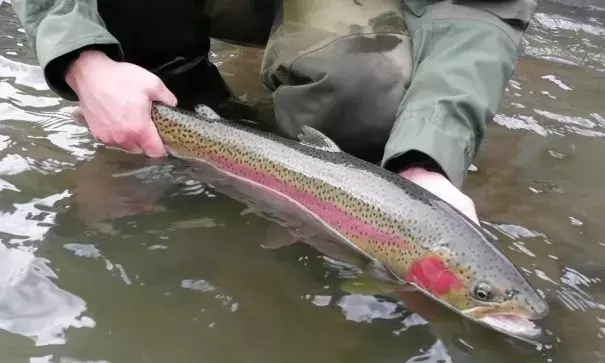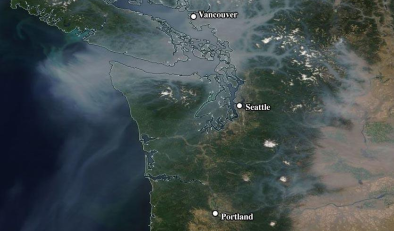Heat wave decimates steelhead population in Yakima River

“Our steelhead numbers are dismal,” said Paul Hoffarth, a district fish biologist for the state Department of Fish and Wildlife in the Tri-Cities. “We’re expecting to see only 10 to 20 percent of steelhead returning this year.”
Of the several hundred thousand salmon returning via the Columbia River, it’s estimated 6,500 will head up the Yakima River and its tributaries. That’s just shy of the 15-year average of 7,000 salmon the Yakima River sees in the late summer.
But Hoffarth cautions the returning salmon, just like returning steelhead, aren’t necessarily in the clear.
The problem, experts say, is hot water.
Salmon are tough beasts. Since the Pleistocene, they’ve spread over a wide geographic area and show a brilliant capacity to adapt and a proclivity to colonize new habitats. But the Northwest salmon and steelhead nonetheless have genetics tuned for cold water, noted Jack Stanford, an emeritus professor of ecology with the University of Montana, affiliated with the Flathead Lake Biological Station.
In water warmer than 70 degrees, Stanford said, Pacific salmon and steelhead tend to slow down, or stop migrating altogether. Their susceptibility to disease rises significantly.
Hot water also increases metabolism rates of those species’ natural predators, such as some bass and catfish, allowing them to feed more frequently, Hoffarth said.
And now, the fish are braving waters that have been scorched all summer by a record-setting Northwest heat wave, leaving water temperatures at some dams along the Columbia River above 70 degrees for several days.
Hoffarth said the disparity between the high number of expected salmon and the low number of expected steelhead can be explained by looking at when those fish headed for the ocean after spawning.
Steelhead returning this year migrated out of the river during horrendous drought conditions in 2015, which included high water temperatures and record low flows — which, due to lower velocity and turbulence, make fish easy prey for animals such as bears and eagles.
Those steelhead were also at sea during the so-called “blob” — a mass of warm water that began forming off the West Coast in 2013 and wreaked havoc in the ocean, including depressed food supplies for a wide variety of marine life.




